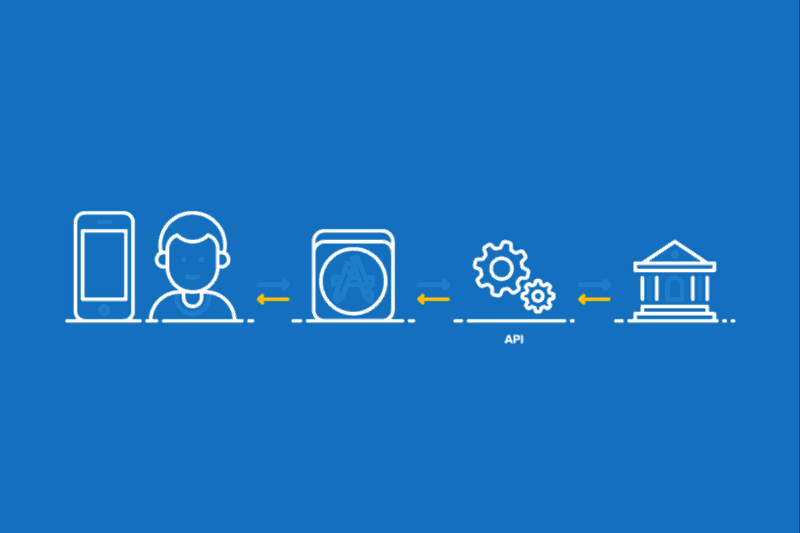GIF credit: Janis Graubins
Way back in 1994, Microsoft Founder Bill Gates made a statement:
“Banking is necessary, but banks are not”
Almost 3 decades later, his prediction looks more correct than ever before. Banks are losing share of customers as well as their wallets to Fintechs at a fast pace and there is little that banks can do. Or maybe they can!
Big becomes Bigger
Let’s start by looking at the current banking landscape in India.
Including Public/ Private sector banks, Payment banks, Rural banks, Small Finance banks and Foreign banks- there are 138 scheduled commercial entities which provide banking services in India, however, the market is dominated by 5 major banks. These banks account for ~50% of the credit as well as deposit share among the scheduled commercial banks.
More importantly, these account for most of the incremental flows. In FY 19-20, ~75% of the incremental deposits as well as loans flew through the top 5 banks.
Whenever geo-political conditions in the country become unstable or instances like Yes Bank/ PMC Bank come to light, people search for stable avenues and business for the top 5 banks intensifies.
Thus, it is not exaggeration to say that business is difficult if you are not among these entities, unless you consider chartering a different path.
Strategy is choosing what not to do
Niraj Dawar and Charan Bagga wrote an amazing piece on positioning in HBR. Quoting them:
Marketers have always had to juggle two seemingly contradictory goals: making their brands distinctive and making them central in their category. Central brands, such as Coca-Cola in soft drinks and McDonald’s in fast food, are those that are most representative of their type. They’re the first ones to come to mind, and they serve as reference points for comparison. These brands shape category dynamics, including consumer preferences, pricing, and the pace and direction of innovation. Distinctive brands, such as Tesla in cars and Dos Equis in beer, stand out from the crowd and avoid direct competition with widely popular central brands.
While they mention Marketers, I believe this is a problem faced by every strategist. Depending on how you define your strategy, every company can fall into one of the 4 quadrants:
Aspirational brands- those that fall into the upper-right quadrant—are highly differentiated and also have wide appeal.
Mainstream brands are those that come to mind when consumers think of the category. Brands that have wide appeal but low distinctiveness fall into the lower-right quadrant.
Peripheral brands have little to distinguish them. They are unlikely to be top of mind or the first choice for most consumers.
Unconventional brands are those with unique characteristics that distinguish them from traditional products in the category.
I tried mapping some of the Indian banks in the same matrix basis my judgement:
Mainstream quadrant is covered by the top 5 banks, Aspirational by foreign banks or private banking brands of mainstream banks, Unconventional by the banks which are making real progress on digital front. And barring these few, most brands fall in the Peripheral quadrant.
Peripheral isn’t ideally the place anyone (in banking) would desire to be in. Peripheral brands, on average, pull in neither the volume of more central brands nor the price premium of more distinctive brands. Such brands continue being side players unless they shift their positioning by adding distinctive features or launching advertising campaigns, which is usually very expensive. More importantly, doing these require talented people who don’t really want to work in traditional banks, let alone the peripheral ones. But what if they could find a partner who can bring in talent as well as money?
Enters Banking-as-a-Service
I recently wrote in a LinkedIn post:
From Software as a service, the world has started moving to API as a service.
From targeting IT buyers, sales processes have started targeting developers.
And from billing basis per user, more and more softwares are billing basis total usage.Tech world changes very fast. Be paranoid.
Bottom line, APIs (Application Programming Interface or API is a software intermediary that allows two applications to talk to each other) are ruling the world. If you want to provide banking services to your user, all you need is access to APIs of a licensed bank and this way, a non-bank business, can offer its customers digital banking services such as mobile bank accounts, debit cards, loans and payment services, without needing to acquire a banking licence of their own. This is called Banking-as-a-Service model or BaaS.
Peripherals like Federal and Equitas know that competing against the mainstream players would be very difficult and hence they are developing more and more APIs which can then be used by FinTechs to serve their customers. Equitas is new to this strategy but Federal adopted this way back in 2015 and look where it stands today:
Since Federal has the banking license, the lending as well as deposits happen on its books and even though gross margins are lower (since they have to share revenue with the Fintechs), huge volumes make up for it.
Now, you know why BaaS is going to be a juggernaut.
Let me know what you think about this article in the comments. In case you liked it, do consider subscribing.







